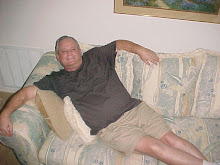Cannabis is a popular recreational /medicinal drug around the world, only
behind alcohol, caffeine and tobacco. In the United States alone, it is
believed that over 160 million Americans have tried Cannabis, with 25 million Americans
having used it within the past year.
The name Cannabis indica was listed in various Pharmacopoeias, and was widely used to designate Cannabis
suitable for the manufacture of medicinal preparations.
More than 20 states (Alaska, Arizona, California, Colorado, Connecticut,
DC, Delaware, Hawaii, Illinois, Maine, Massachusetts, Michigan, Montana,
Nevada, New Hampshire, New Jersey, New Mexico, Oregon, Rhode Island, Vermont,
Washington) have approved marijuana use for medicinal purposes and Colorado
and Washington are opening up the plant for recreational use.
Marijuana
companies rose more than 50 percent in 2013 and opened 2014 with a bang, rising
almost 150 percent in just three weeks.
A few that filed with the SEC at the time of this writing include
CANN (currently halted pending SEC investigation), CANV, CBIS, FULL and GWPH and GWPRF trades on NASDAQ,
MCIG, NVLX, PHOT, VAPE.
